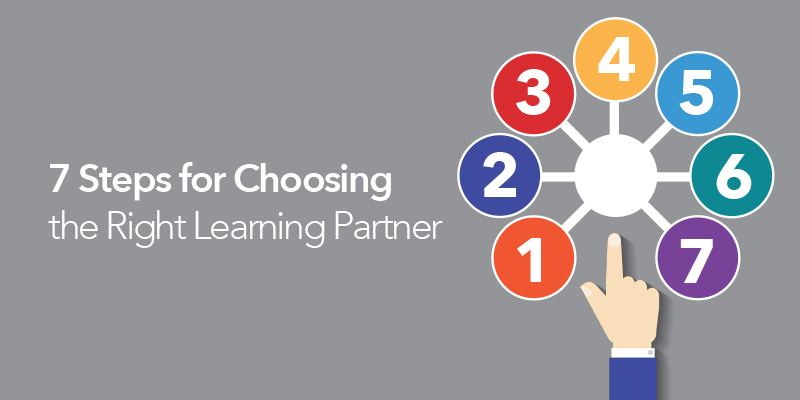
Prior to the digital age, training was seen as something nice-to-have, but not critical. In today’s world, 61% of organizations experience three or more major initiative changes every year - only 17% rate themselves as highly effective at managing those changes and only 30% have change management teams or the learning and development (L&D) departments in place to support them.1
 What’s more is that of those organizations with resources in place, about 59 percent will use an outside provider to augment some part of their learning function.2 If your organization aspires to tackle disruption head-on, you already understand the importance of moving from a reactive to a proactive mindset. It’s a fact, enterprises leverage external providers to deliver more learning than internal resources can provide, to gain access to better learning expertise while controlling costs and to supplement internal resources to have learning resources available on an as-needed basis.
What’s more is that of those organizations with resources in place, about 59 percent will use an outside provider to augment some part of their learning function.2 If your organization aspires to tackle disruption head-on, you already understand the importance of moving from a reactive to a proactive mindset. It’s a fact, enterprises leverage external providers to deliver more learning than internal resources can provide, to gain access to better learning expertise while controlling costs and to supplement internal resources to have learning resources available on an as-needed basis.
So how do get the selection process right? Driving employee performance in today’s business environment starts by establishing a strong learning strategy and choosing the right partners to bolster your team because developing and delivering effective learning solutions is more challenging than ever. Enterprises are continuously asking their learning organizations to do more with less.

Additionally, emerging technologies, business competition and learner expectations are increasing the pressure on learning organizations to reduce time-to-value. When given a choice to outsource or hire additional resources, 50 percent of CLOs think outsourcing is more cost-effective and flexible than hiring resources. “Training needs [are] constantly changing. In-house expertise becomes static and confined to specific areas.” – Fortune 500 Technology CLO, IDC survey of Chief Learning Officer magazine’s Business Intelligence Board. Learning organizations that can harness the rapid evolution of technology to improve learning outcomes and demonstrate business impact are more likely to receive investment in the future.
Many of today’s successful companies have turned to approaches based on engagement, data, collaboration and measurable outcomes. All of which has helped these organizations thrive, grow and increase revenue year after year.
Establishing a culture of learning doesn’t happen all at once, nor does it happen in a vacuum. A crucial element in developing an effective strategy is finding an experienced and expert learning partner to support and guide you through the process. But it’s got to be the right fit for your business. To help find that partner, it’s useful to follow this six-step path:
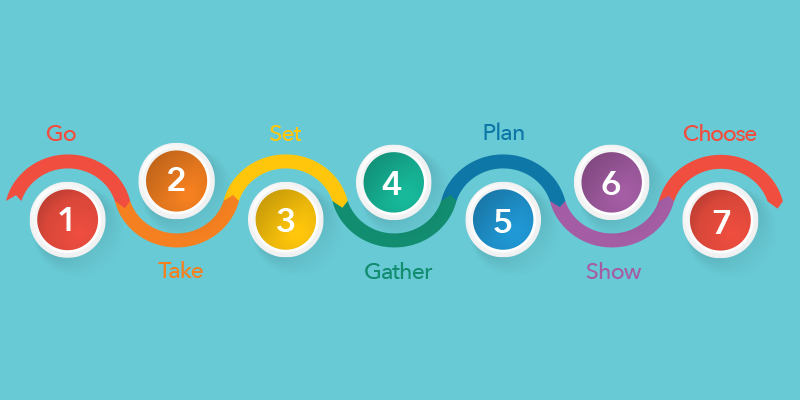
- Go Lean … and Agile
- Take Stock of Where Your Company Is and Where You Want to Go
- Set Clear Goals
- Gather Requirements & Secure Buy-in
- Plan for the Future
- Show Me the Proof Points
- Don’t Settle- Choose Your Ideal Partner
Step 1: Go Lean … and Agile!
Today, more than 52% of organizations are using agile approaches to manage the majority of their software development projects. Scrum and Scrum variants are the most popular agile methodologies in use with companies implementing the methodology to accelerate time-to-market, increase productivity and improve their adaptability. Best-in-class partners combine core agile principles, Scrum, best practices for instructional design and lean principles championed by the authors of The Lean Mindset, Tom and Mary Poppendieck, to create a lightweight approach to continuous improvement that provides transparency, reduced time-to-value and greater alignment with client expectations over the course of a project. The principles of lean software development are:
- Eliminate waste. Anything that does not add value in some way to the learning solutions delivered to clients is considered a waste.
- Build in quality. Procedures are in place to prevent defects and issues from entering the process.
- Amplify knowledge. The client and the team create critical knowledge by experiencing the solution themselves.
- Decide as late as possible. Deliver better results by taking an options-based approach. Make decisions based on facts learned through the development process rather than uncertain assumptions and predictions.
- Deliver as quickly as possible. The sooner a solution (or part of a solution) is delivered with quality, the sooner clients are able to provide feedback that the team can incorporate into the work for the next week.
- Empower the team. An empowered team attracts bright, creative people who collaborate to deliver wildly successful deliverables.
- Optimize the whole. Observe the end-to-end value stream that clients experience from initial contact through to delivery of the solution and subsequent follow up.
Step 2: Take Stock of Where Your Company Is and Where You Want to Go
Before your company can choose a learning partner, you need to figure out what each line of business needs to achieve and gauge each division’s existing approach to learning.
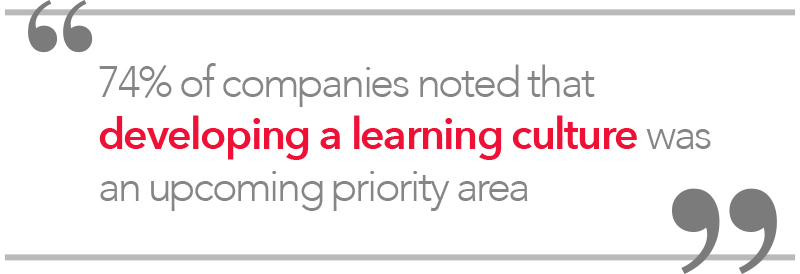
In a 2015 Human Capital Institute survey, 74% of companies noted that developing a learning culture was an upcoming priority area, with a learning culture defined as one that had the following sets of values or beliefs: 4
- A growth mindset is to be encouraged (abilities are developed through hard work
- Learning is a process not an event
- Employees enjoy challenges
- Learning agility is a valued competency in all employees
- Risk-taking should be supported
- Mistakes are something from which we learn
Yet only 11% of companies surveyed embodied five or more of these characteristics.
Among that 11%, however, the wealth of positive attributes was impressive, with:
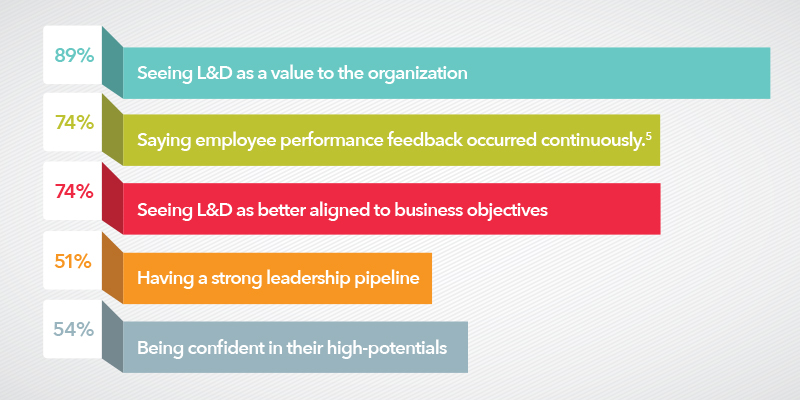
In their study, “Is Yours a Learning Organization,” David A. Garvin, Amy C. Edmondson and Francesca Gino6 take the process a step further by encouraging companies to answer the following questions:
- Is your work environment supportive of learning?
- Have you established clear, concrete learning processes and practices?
- Does your company’s leadership actively support your learning culture?
These questions get to the root of what it means to establish a learning strategy that aligns with your culture. In answering these, you open a window into your workforce’s ability to embrace novel solutions to new and existing problems and determine which approaches need to come from inside or outside of the company hierarchy.
This self-assessment gives line of business and executive leadership an understanding of how new solutions will be embraced, solicits input from a broad population of employees and offers insights into how to encourage employees to be more invested in results.
Step 3: Set Clear Goals
This step focuses partly on what your company hopes to accomplish through learning and development (for individual lines of business and company-wide). This phase should also center on maximizing the effectiveness of the learning and development organization by:
- Adhering to well-defined timeframes
- Establishing success metrics
- Creating efficient communication
- Defining clear processes
Your ideal partner should provide a timeline for accomplishing all project goals and assurances to stay on track as well as present a consistent history of adhering to established timeframes, success and engagement metrics and take special care to embed thinking outside of the box every step of the way.
As you gauge potential learning partners’ effectiveness you should also consider four essential items:

- Partners with good communications strategies should have a deep track record showcasing how they’ve helped promote knowledge sharing across client organizations. Your partner should help you amplify and broadcast successes, build excitement about the learning experience and help new, winning approaches spread deeper into the fabric of each line of business. In addition, qualified learning partners will have well-documented records of how effective their client communications have been over the years.
- Digital experience delivery makes or breaks firms’ ability to engage today. Consumers, in general, have come to expect a high-quality digital experience from service and product providers across industries—retail, health care and entertainment, among others. A “marketing quality level” of digital experience is permeating the digital experience and changing the expectations of both consumers and learners. Consumer expectations spread to other online experiences, including e-learning, where learners expect high-quality graphic design, interactivity, fast-paced video and integrated audio elements. Learning organizations that can take advantage of available tooling and rapidly evolve new techniques to create a more robust digital experience are able to deliver a more engaged learning experience.
- Data and analytics are enabling the delivery of more personalized online experiences. Today’s software applications blend data from systems of record (e.g., HR, CRM, consumer databases, data warehouses) with systems of engagement (e.g., email, collaboration, social, and learning systems) to provide more opportunities than ever before to create custom-tailored and targeted learning solutions that efficiently meet an individual’s learning objectives.
- Your ideal partner should also have clear and defined processes in place, as well as extensive project-management experience, that you can review and discuss before, during and after the project is completed. Furthermore, you will want to work with a partner that has extensive experience designing and developing learning models that are more than one-size-fits-all programs. The partner’s processes also need to complement your internal culture and be based on the latest, most-effective models, technologies and designs.
Step 4: Gather Requirements & Secure Buy-in
You’re nearly halfway there! You know where you stand and have created a preliminary set of learning goals with each line of business, now you need to ensure that the divisional goals align with and address the larger needs of the company. An expert partner should be able to help you drive this process forward by objectively doing real discovery, without making assumptions about how things are done and who is doing the work based on job titles, and outline where and how things actually get done within your organization. Other important aspects of the collaboration process include:
- Taking a grass roots approach–having employees give back
- Making sure that the learning function feels locally owned (and truly empowers employees)
- Working backward from the business problem to develop useful learning
- Not underestimating the impact external/environmental factors have on your business
- Building a robust rewards system
Collaborating also identifies skills gaps in the organization with respect to peers inside and outside the company and helps your learning partner design an effective workforce performance program. In addition, this joint approach gives rise to a blended curriculum that combines formal and digital learning with on-the-job training and alternative approaches such as coaching. This results in learning programs with a wider array of touchpoints that connect with more employees at one time and have an effect at the institutional level as well.
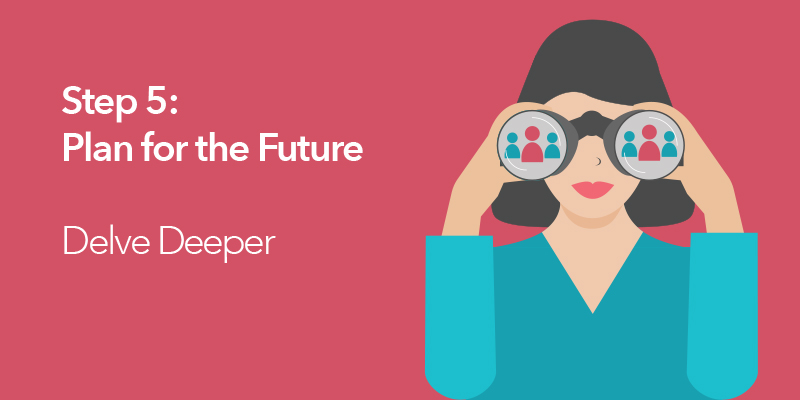
Step 5: Plan for the Future
Now you’ll delve deeper into the qualifications your ideal learning partner brings to the table. The right selection should:
- Effectively and pragmatically measure the effectiveness of learning.
- Assure consistent quality of faculty and instructional designers.
- Ensure content expertise.
- Provide training customized to your industry.
- Provide training on applications as they are used inside your firm and not just out-of-the-box training.
- Provide curriculum that reflects the pain points of your industry and its specific requirements.
- Develop flexibility and installed capacity to provide training at any time.
- Have a good grasp of current learning trends and technology and excel at driving new initiatives
- Bring new ideas, talent and methods of execution to the table
- Have creative chops and a strong track record on engagement
- Have expertise in multiple learning and development strategies
- Be able to collaborate with your teams and business stakeholders through all phases of design and development
- Help with execution and support you in building robust analytics and business intelligence programs to support your L&D initiatives
- Most importantly, provide an excellent team.
Choosing an ideal learning partner is a lot like hiring a new employee to work in any part of your business, and your criteria should be no less rigorous.
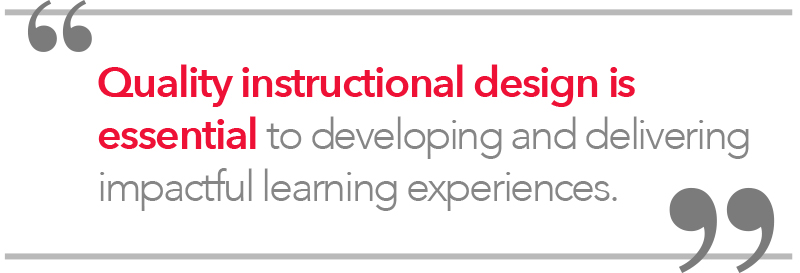
Your candidate needs to have valid L&D credentials. The prospective partner should have experienced experts on staff with all of the skills required to complete your learning project, including instructional designers, artists, writers and editors. And, don’t underestimate the value of design: Quality instructional design is essential to developing and delivering impactful learning experiences. This team must be able to address diverse learning strategies and delivery methods: Technology Selection, Content Development, Employee Motivation, E-Learning Business Process Design, Financial Analysis and Mobile as well as an ability to fit in with your business culture. In addition, potential candidates should be able to show a clear return on investment from past work they’ve completed.
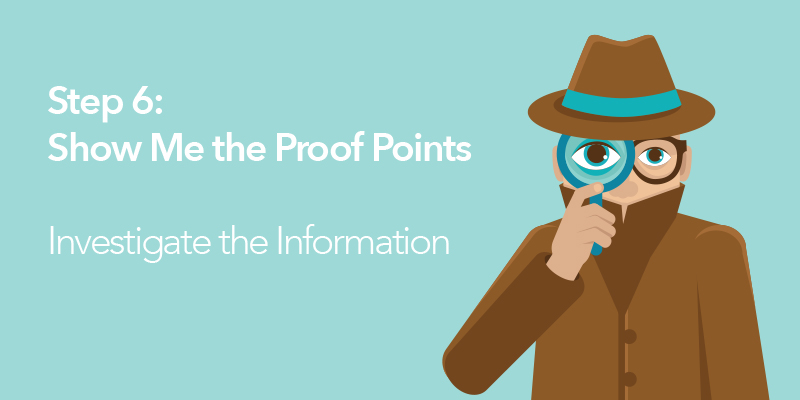
Step 6: Show Me the Proof Points
This next-to-last step is where you need to take all the information you’ve gathered during the research phase and investigate its veracity by:
- Meeting with potential partners for an assessment
- Asking questions about their learning philosophies and processes
- Consulting with them about their business culture and compatibility with your own organization
- Quality and knowledge matters - explore the provider’s subject matter expertise.
- Referencing their credentials and track record to confirm relevance and fit
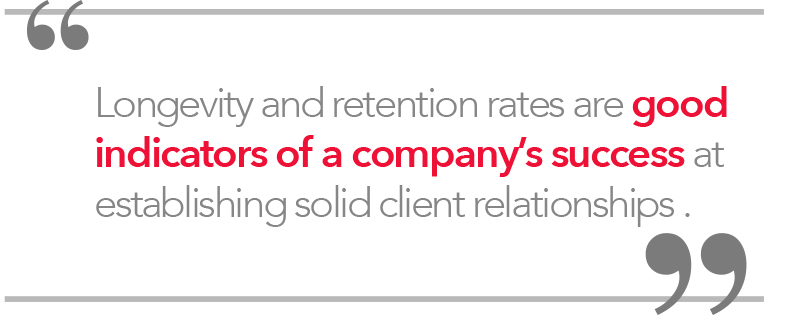
You will want to observe these potential partners in action as they walk you through their recommendations for aligning learning strategy with business strategy. It’s also a positive if the potential learning partner has been in business for a relatively long time (no less than 5 years). Longevity and retention rates are good indicators of a company’s success at establishing solid client relationships as well as meeting the needs of those clients. It’s also worthwhile to learn:
- Which clients they’ve worked with repeatedly
- What the recommended team structure would look like
- Whether the staff includes subject matter experts and generalists9

You’ll also gain insights into the partner’s skill set by reviewing its portfolio of past and present work: The success stories. This will provide a clearer picture of the services the partner provides. It will also give you additional insight into the company’s processes as you look more deeply into past clients’ projects from the initial phases of design and development through the implementation, reporting and review stages. You’ll get a better understanding of the level of detail and quality the company provides for its clients as well. Nearly 70 percent of CLOs now report learning expertise is among the top criteria when selecting a provider. And a truly exceptional partner will go beyond the basics to deliver optimal value through:
Net Promoter Score - After each project completion, clients are asked to answer one simple question: “On a score of 0–10, with 10 being extremely likely and 0 being not likely at all, how likely is it that you would recommend your partner to a friend or colleague?”
Growth in the Number of E-learning Projects - Delighted clients are more likely to return for additional help with learning initiatives and projects in the future. Your ideal partner should measure success on being able to support clients on a long-term basis.
Number of New Clients - Delighted clients are more likely to recommend a partner to other departments within their organizations or to their peers in other enterprises.
Client References – Trusted advisors view client references in the form of case studies, white papers, co-presentations and video testimonials as being a significant demonstration of their ability to delight clients. Additionally, client references can often be used to build awareness of their excellent learning programs.
Helping Clients Measure Success - A partner that helps clients to develop and implement learning solutions can drive a higher level of business value—increased revenue, reduced operating costs, improved quality, etc. Throughout a project, a trusted partner works with clients to determine what their business goals are and to identify ways that they can support clients in measuring the impact of their solutions.
Step 7: Don’t Settle. Choose Your Ideal Partner
Now that you’ve done all the legwork necessary to learn about who would make an ideal learning and development partner for your organization, the final step is to choose. And thanks to your detailed self-assessment, research and investigation, you should have little trouble weighing the strengths and weaknesses (if any) of each candidate. In fact, the choice should be clear.
For a clearer picture of why CGS Enterprise Learning has been a trusted workforce performance partner to top-performing companies for more than 30 years, how CGS goes about scaling people, processes and performance, why CGS Learning has a 95% customer return rate, and what else CGS’s Enterprise Learning Services have to offer, please contact [email protected] for a free assessment.
What does CGS do?
“CGS Enterprise Learning supports over 800,000 learners globally; retains 95% of our customers; and has been awarded a top spot on Training Industry's Watch List for our unique approach to leadership development solutions for 7 consecutive years.”
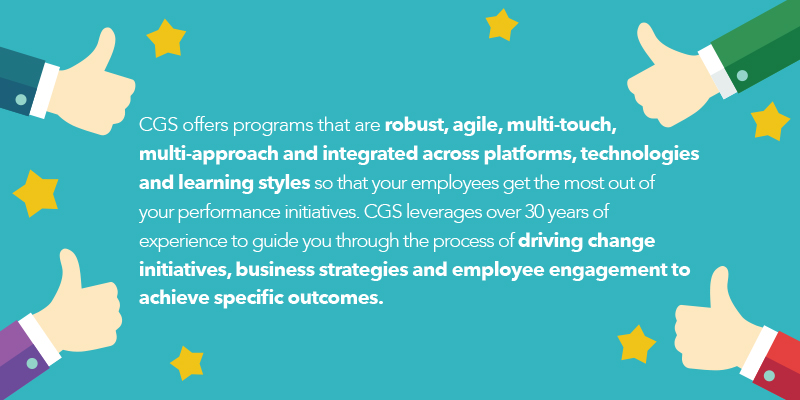
References:
1 CGS Learning: A Trusted Partner for Change, Corporate Presentation.
2 Bi-Monthly IDC survey of Chief Learning Officer magazine’s Business Intelligence Board
3 ASTD. (2013). State of the Industry Report. Retrieved from https://www.td.org/Publications/Blogs/ATD-Blog/2013/12/ASTD-Releases-201....
4 http://seekingalpha.com/article/2651195-increasing-churn-rate-in-the-s-a...
5 Learning Unbound: Agile Employee Development, Human Capital Institute, 2015
6Learning Unbound: Agile Employee Development, Human Capital Institute, 2015
7 David A. Garvin, Amy C. Edmondson, and Francesca Gino, “Is Yours a Learning Environment,” Harvard Business Journal, March 2008.
8 Category Management Training Partners: Choosing the Right One, Sue Nicholls, President, Category Management Knowledge Group
9”Selecting an E-Learning Partner,” Jennifer De Vries.
